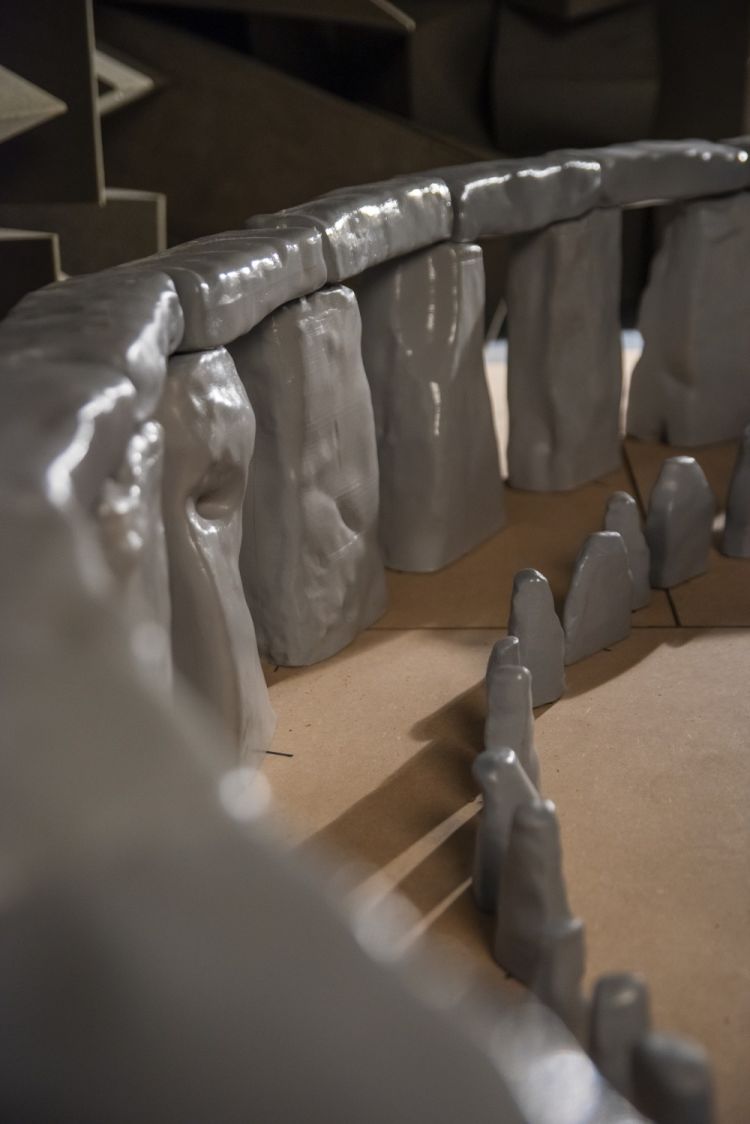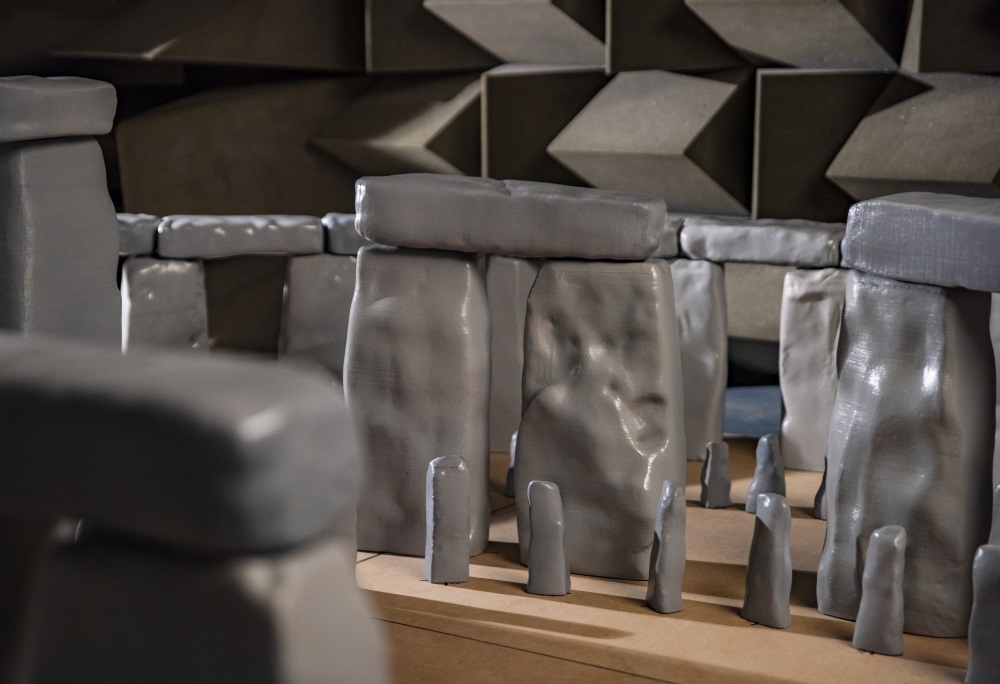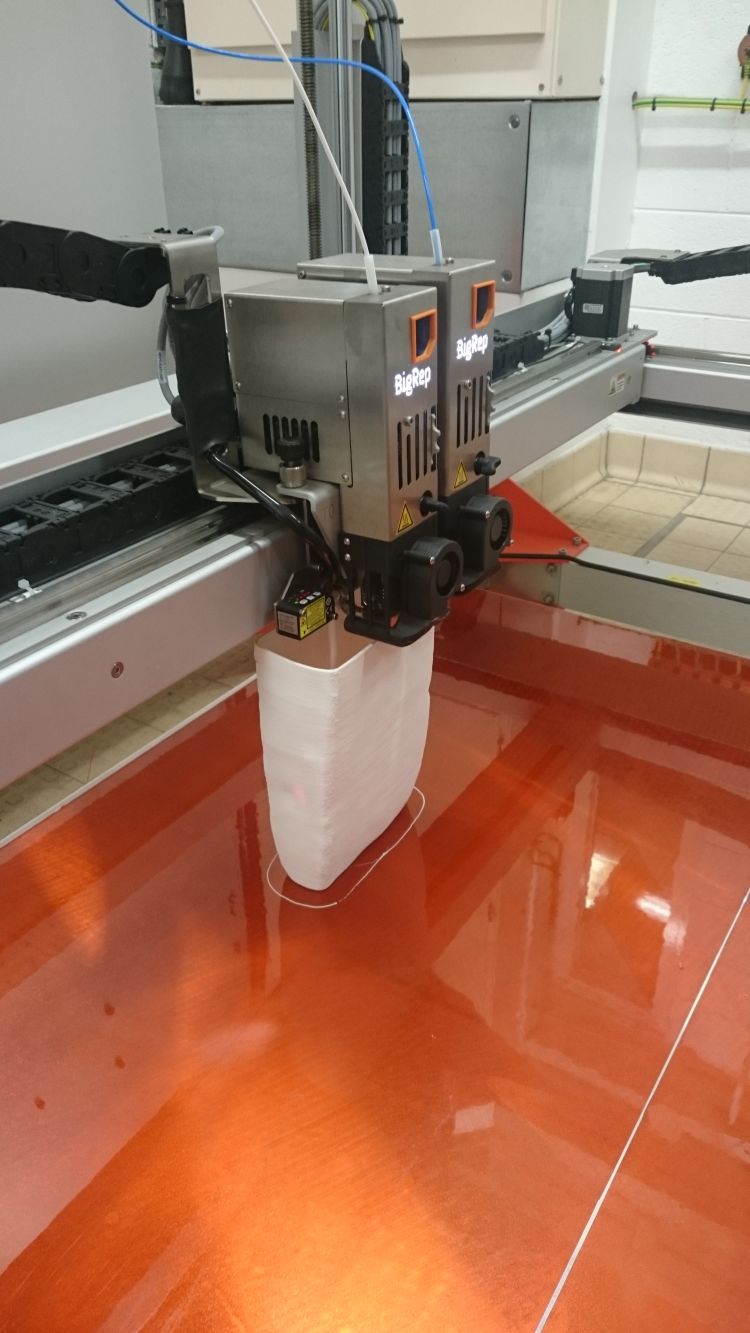What did it sound like to be stood inside Stonehenge in 2200BC? Paul Milligan speaks to Professor Trevor Cox who has undertaken the task of acoustically mapping the famous structure.
Stonehenge is one of the most famous landmarks in the UK, but despite its prehistoric age the 30-metre ring of 4-metre-high, 25-ton stones is still surrounded by mystery. Archaeologists estimate its time of construction as being between 3,000 and 2,000 BC, and no records have survived to explain how it was built and what the purpose of the circle actually is. Is it a burial site? Was it ceremonial or religious in some way? Was it an astronomical observatory?

One aspect that has never been cleared up is how standing inside that ring of giant stones would have sounded. And that is a challenge a team of academics at the University of Salford’s Acoustics Research Centre has taken on. Although the acoustics of modern Stonehenge have already been measured (a Cambridge University study in 2006) the sound now is very different from how it would have been in the past because so many stones are missing or have been displaced. Using a map supplied by English Heritage (a charity that manages over 400 historic sites) of the site in 2200 BC, the research team, led by Trevor Cox, professor of acoustic engineering, chose scale modelling as the mode to provide results.
“The technique for architectural acoustics - physical scale modelling - was really established but no one had tried using it before, so I thought I know how we can approach this and get some more information,” says Cox. The research set out with the aim of answering two key questions; how would musical sounds and speech be altered by the 157 stones, and what does this say about where rituals might have taken place? And how did the construction phases affect the acoustics, and how does this feed into debates on whether sound informed the design?
To do this Cox and his team would have to delve into the field of archaeoacoustics. “The archaeological drive here is to better understand why Stonehenge was built. If we take a site, which is being used for rituals, which I'm pretty sure Stonehenge was, then it probably involves sound and speech and music in some form. As soon as you have that, then the space you’re in changes, the voice changes, the sound changes, and what you hear is amplified as reverberation. We know that where you perform makes a difference to what performance is like, and the same is true of rituals.”

Unlike the typical research project, this one had no funding and was purely a labour of love says Cox. “It was a strange project because it's one of those I've done in my spare time. I spent a lot of time under my carport at home building the model. That’s why it's great to be an academic, you can do this kind of stuff as long as you do the rest of your day job.”
Cox’s first task was to convince Historic England to give his team a map of the site. “We had to convince them it was a worthwhile project, so we had to write a document to say what we hoped to get out of it and the aims of doing it. That's step one. What came next was logistical - how are we going to make the stones?”
Once the team had the map in hand it was time to decipher the scale of the physical model. A scale of 1:12 was chosen, which meant they would have to use the same scale for measuring the frequency. “If you go up to 5000 hertz, so 5000 x 12 = 60,000 hertz, and microphones and loudspeakers (have to meet that), practical things then come in to play, how do you take the measurements and make them robust? Fortunately, it's a well-defined technique, but it’s the logistical issues that make it difficult, ideally we'd want to go up to 150 hertz but that's not something you can just buy off the shelf.”

Cox and his team built the 1:12 scale stones with ‘lots of help’ from model makers at the University, but as it was done in spare time only took six months to construct them all. Stonehenge is made up of a myriad of differently shaped stones, and it was clear early on they wouldn’t be able to reproduce them all individually. “We did a calculation of the time it would take to 3D print everything and it would have taken 6-12 months of continual printing, with no errors, it was just not feasible,” says Cox.
“If it was a unique stone, we would 3D print it on its own, which would take a few days, and then backfill the concrete.” When it came to reproduce the blue stones around the circle, around 80 in total, a decision was made to make a few select moulds, representing the tall thin ones and short fat ones. It wasn’t just the height of each stone they had to get right, but how wide each one was, and the surface of each one too. “Finding out how wide and fat is really important, because that really determines how fast the sound moves and how big the delay is. Then you want the surface roughness to be accurate, you have to get the bubbliness on the front correct. We used the actual scans from the rocks to give them the right surface topology, so we got the correct roughness that you see at the real site.”
When producing the scale model how accurate did the reproduction of the ground surface of Stonehenge have to be to produce meaningful results? “The ground does have an effect,” admits Cox. “The assumption is that the actual surface is compacted grass over chalk. It had to be compacted because they moved giant rocks weighing tonnes and tonnes everywhere. We didn't use grass in the model because grass at 12 times frequency would be too absorbing. We looked at materials that at 12 times the frequency has a similar absorption rate.”
Cox’s team eventually chose unvarnished MDF as the floor surface as the most similar. “People are surprised when they look at the model and see we have a wooden floor. It’s because you're trying to mimic the acoustic properties but allow for scale change. So the absorption of stones at 1000 hertz full scale, needs to have absorption for the stones at 12,000 hertz in the model. So the materials were carefully chosen to try and match properties at the scaled up frequencies.”

The biggest challenge Cox and his team faced on this project was the sheer size of the model, but there were other issues too; “From an audio point of view we don't standardly have transducers, microphones or loudspeakers working in that range. In our acoustic lab we have quarter inch and eight-inch mics that go up to really high frequency, but because the model isn't that enclosed you’re not getting that much reinforcement for reflection, so the sound energy is quite low. And then you run into electrical noise problems with microphones. I knew from scale modelling in the past you can't go and buy something off the shelf which will do what you want. It's not a technique that is used often enough to drive someone to solve it. I was sent some tweeters from someone who used to work in archaeoacoustics, which were timed at 25 hertz, but they're 10 centimetres, so in the model they're the size of one of the biggest rocks. So if you stick that in the model and it changes the acoustics.”
The results took Cox a little by surprise he admits, “I wasn't surprised there was reverberation, you've got such an open area, there is a roof missing, absorbent ground, lots of rocks with gaps in-between and yet you get reverberation time of 0.6 or 0.7 seconds, that's quite surprising, we thought there'd be very little there at all. But it’s staying in the horizontal plane, and it’s really interesting you can have a semi-enclosed space but still have an acoustic. You would assume that having rocks scattering energy that you would lose stuff, but no, you do generally still get an acoustic.”
Given the results it’s very unlikely the site was designed with the sound in mind says Cox, “If you're going to build a site for acoustics, you would probably make it better than that. There's no evidence of acoustic intentionality in what they did. What you can say for certain is that given it's got an interesting acoustic; it would have been strange not to have exploited that in some way.”
The results found the acoustics inside the circle were helpful for speech or music, but if you were outside trying to talk in, or inside trying to talk out, things changed quite dramatically, ‘the stones just get in the way’, he adds.
Having completed this task what is next for Cox and his team, another historical monument maybe? “We know in audio, when a venue fills up the acoustic changes, so what happens when we have people present at a ceremony at Stonehenge? We want to quantify the effects of people inside it.”